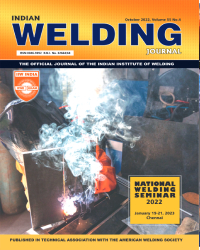Effect of Buffer Layer on Interface Bond Strength and Abrasive Wear of Hard Faced Cast Iron
Subscribe/Renew Journal
The effect of five different buffer layers followed by a hardfacing electrode deposited on gray cast iron plate (ASTM grade 2500) upon performance of interface between substrate cast iron and deposited layers as well as abrasive wear behaviour of hardfaced deposits were studied. The results show that high nickel buffer electrode attributed best performance of interface bond in terms of shear strength and relatively lower nickel buffer electrode attributed best abrasive wear properties. The shear strength at the interfaces and wear properties has been correlated with microstructure and micro-mechanism of fracture in shear strain and micro-mechanism of metal removal in abrasive wear.
Keywords
Buffer Layer, Hardfacing, Hardness, Carbides, Bond Strength, Abrasive Wear.
User
Subscription
Login to verify subscription
Font Size
Information

Abstract Views: 560

PDF Views: 4



